Abstract
Allelic complementation at the decapentaplegic gene complex (dpp: 2-4-0, cytogenetic location: polytene chromosome bands 22F1-3) of Drosophila melanogaster frequently occurs between site mutations. Two specific instances of allelic complementation are shown to be dependent upon normal somatic chromosome synapsis of homologous dpp genes. Numerous strains have been identified that bear lesions that disrupt allelic complementation when heterozygous with structurally normal chromosomes; each of these 57 strains contains a gross chromosomal rearrangement with a break on chromosome 2. The properties of the rearrangements carried by 50 of these strains are consonant with the idea that their effects are due to a disruption of somatic chromosome synapsis in the dpp region of chromosome arm 2L. In double heterozygotes of simple two-break rearrangements, allelic complementation is restored (presumably through the restoration of structural homozygosity). The types of rearrangements that disrupt complementation have properties very similar to those of rearrangements that disrupt the transvection effect at bithorax [Lewis, E. B. (1954) Am. Nat. 88, 225-239]. The existence of synapsis-dependent allelic complementation is a demonstration of the physiological importance of nuclear organization in gene expression.
Full text
PDF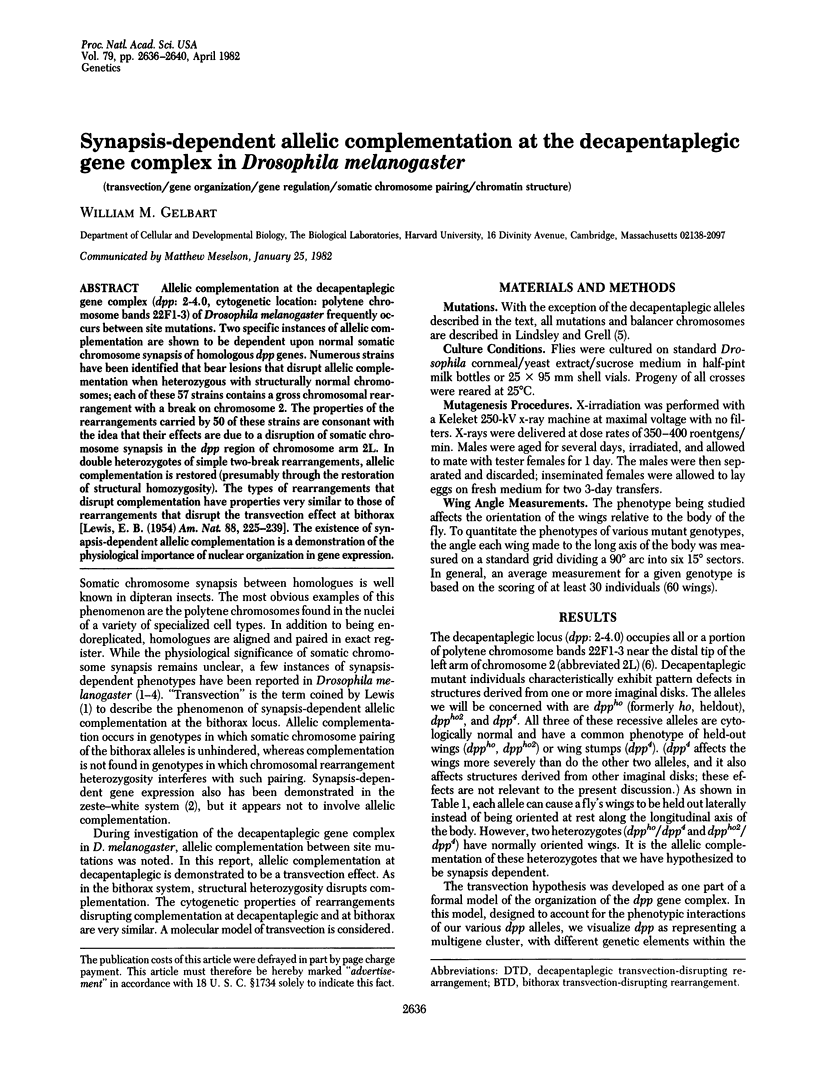
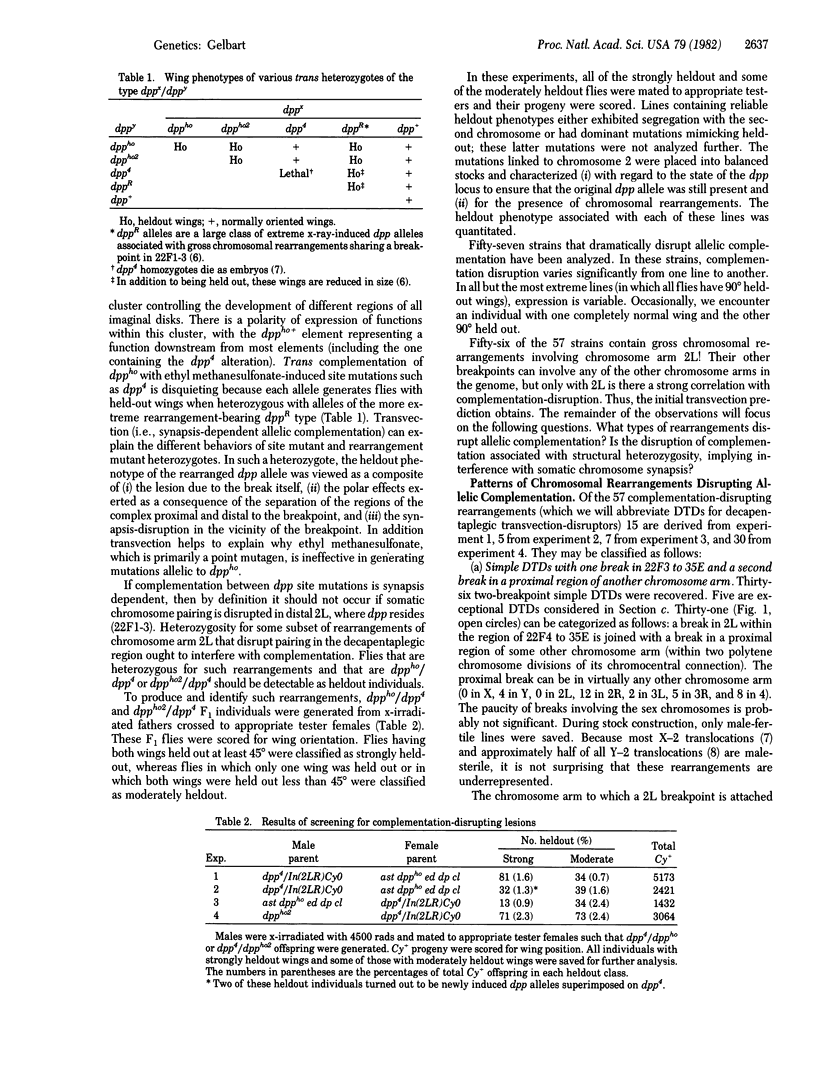
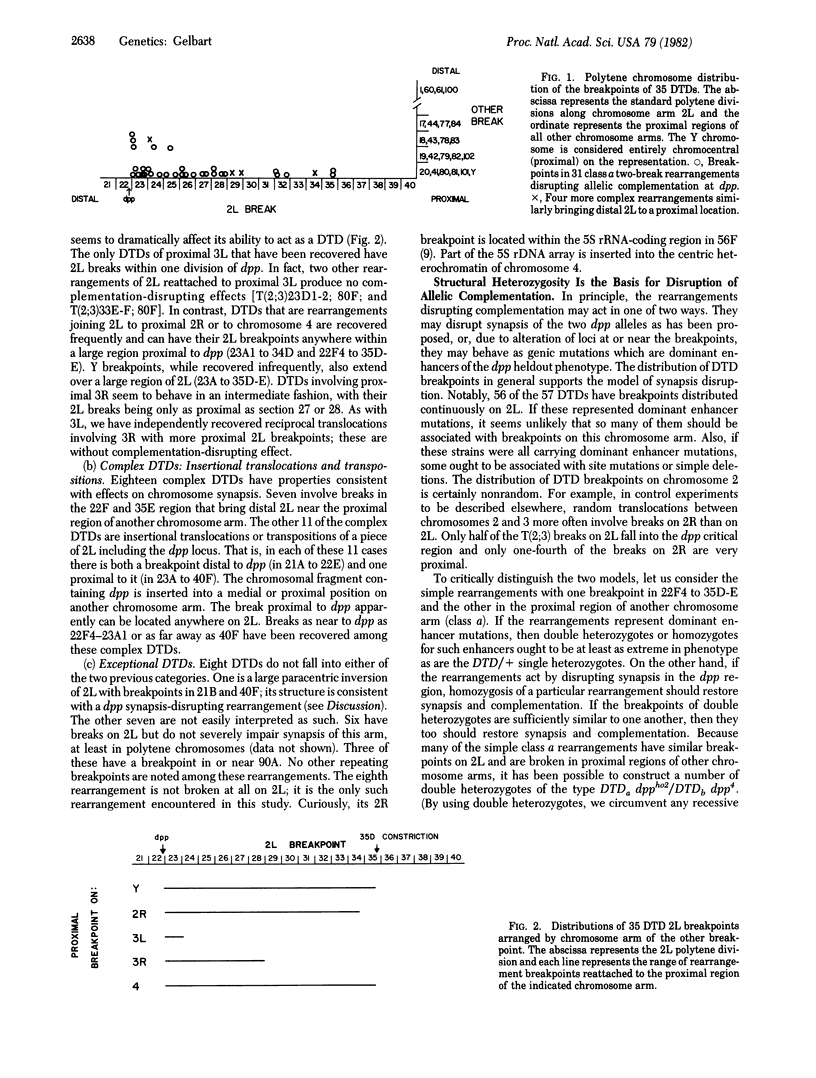
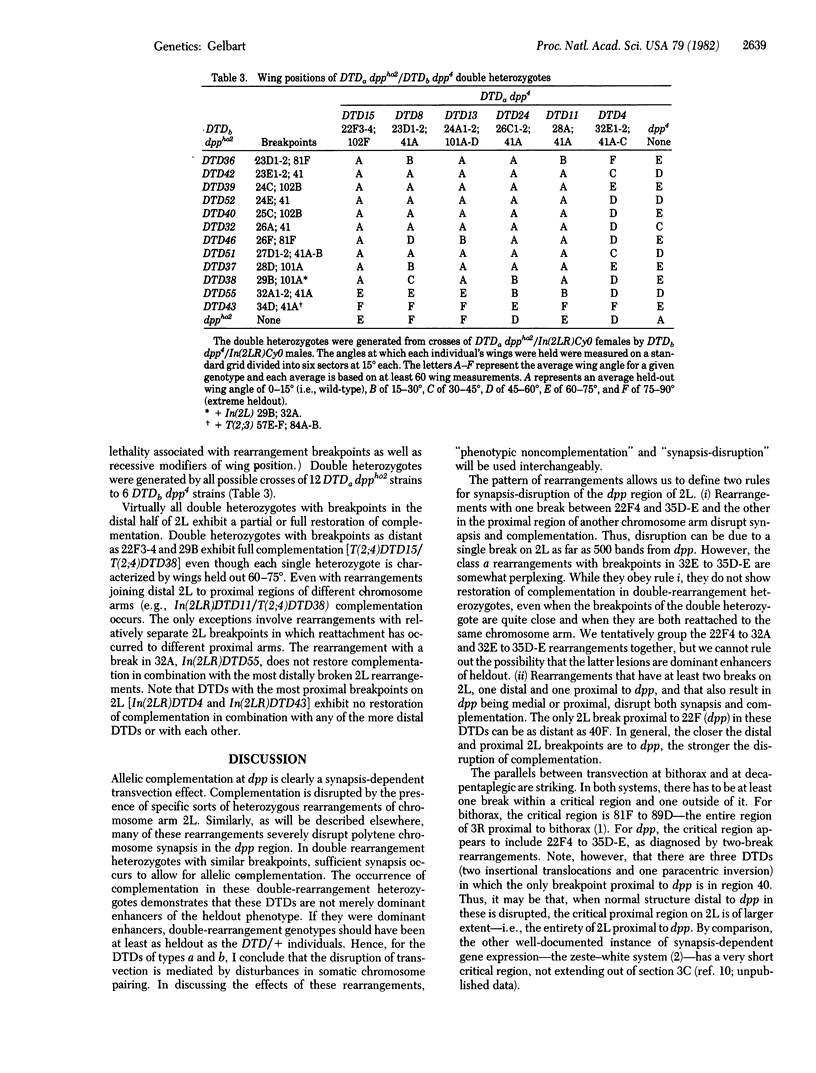
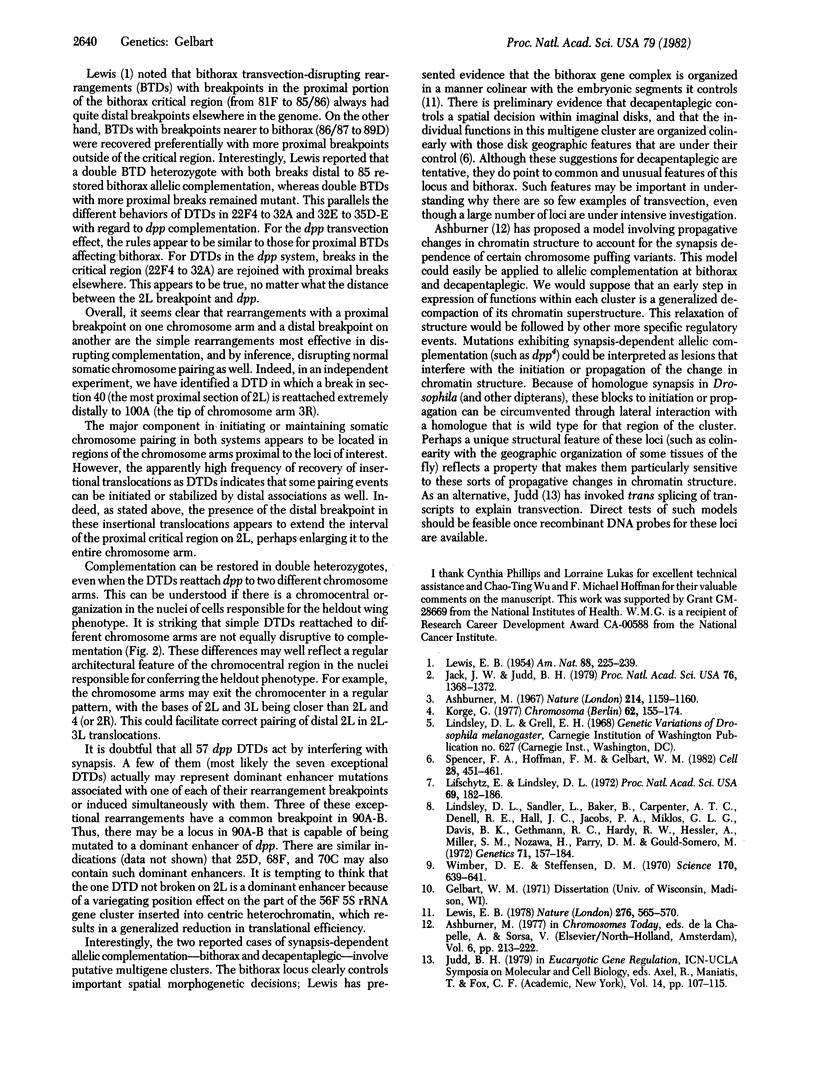
Selected References
These references are in PubMed. This may not be the complete list of references from this article.
- Ashburner M. Gene activity dependent on chromosome synapsis in the polytene chromosomes of Drosophila melanogaster. Nature. 1967 Jun 10;214(5093):1159–1160. doi: 10.1038/2141159b0. [DOI] [PubMed] [Google Scholar]
- Jack J. W., Judd B. H. Allelic pairing and gene regulation: A model for the zeste-white interaction in Drosophila melanogaster. Proc Natl Acad Sci U S A. 1979 Mar;76(3):1368–1372. doi: 10.1073/pnas.76.3.1368. [DOI] [PMC free article] [PubMed] [Google Scholar]
- Korge G. Direct correlation between a chromosome puff and the synthesis of a larval saliva protein in Drosophila melanogaster. Chromosoma. 1977 Jul 5;62(2):155–174. doi: 10.1007/BF00292637. [DOI] [PubMed] [Google Scholar]
- Lewis E. B. A gene complex controlling segmentation in Drosophila. Nature. 1978 Dec 7;276(5688):565–570. doi: 10.1038/276565a0. [DOI] [PubMed] [Google Scholar]
- Lifschytz E., Lindsley D. L. The role of X-chromosome inactivation during spermatogenesis (Drosophila-allocycly-chromosome evolution-male sterility-dosage compensation). Proc Natl Acad Sci U S A. 1972 Jan;69(1):182–186. doi: 10.1073/pnas.69.1.182. [DOI] [PMC free article] [PubMed] [Google Scholar]
- Lindsley D. L., Sandler L., Baker B. S., Carpenter A. T., Denell R. E., Hall J. C., Jacobs P. A., Miklos G. L., Davis B. K., Gethmann R. C. Segmental aneuploidy and the genetic gross structure of the Drosophila genome. Genetics. 1972 May;71(1):157–184. doi: 10.1093/genetics/71.1.157. [DOI] [PMC free article] [PubMed] [Google Scholar]
- Spencer F. A., Hoffmann F. M., Gelbart W. M. Decapentaplegic: a gene complex affecting morphogenesis in Drosophila melanogaster. Cell. 1982 Mar;28(3):451–461. doi: 10.1016/0092-8674(82)90199-4. [DOI] [PubMed] [Google Scholar]
- Wimber D. E., Steffensen D. M. Localization of 5S RNA genes on Drosophila chromosomes by RNA-DNA hybridization. Science. 1970 Nov 6;170(3958):639–641. doi: 10.1126/science.170.3958.639. [DOI] [PubMed] [Google Scholar]


